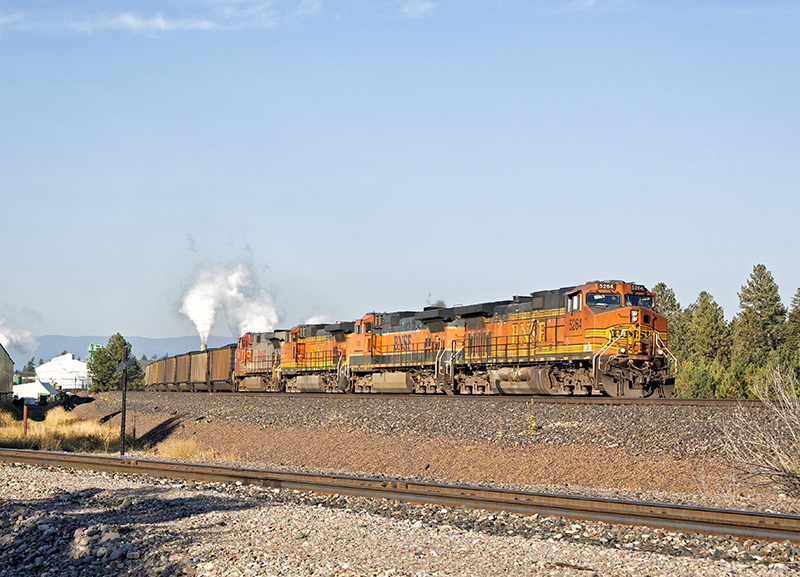By Justin Franz
COLUMBIA FALLS, Mont. — The only thing more unusual than empties east and empties west, are loads heading west and east, but that’s exactly what’s happening in the Pacific Northwest this fall due to a port strike in British Columbia.
A majority of the coal moved by rail from British Columbia, Montana and Wyoming, heads west toward Roberts Bank, B.C., on the Pacific coast, where it is unloaded and exported overseas. Those shipments were moving as normal until September when International Longshore and Warehouse Union’s Local 502 went on strike against Westshore. The union has been trying to hash out a deal with the terminal operator for a year and its current contract expired in January. After failing to come to terms, the union went on strike and the port has been shuttered since. Initially, railroads like BNSF Railway, Montana Rail Link, Canadian Pacific, and Canadian National began parking westbound coal trains on sidings across the Pacific Northwest.
But as the strike drags on, coal companies have been looking for new buyers of their product that is sitting on sidings across the region. As a result, some coal trains have started to move east — a direction loaded coal trains rarely go in the Pacific Northwest — and on lines you rarely see them. Just this week, for example, at least two coal trains headed east via BNSF’s former Great Northern Railway main line across northern Montana, a route that rarely sees coal trains in any direction. A number of coal trains have also gone east via Montana Rail Link.



